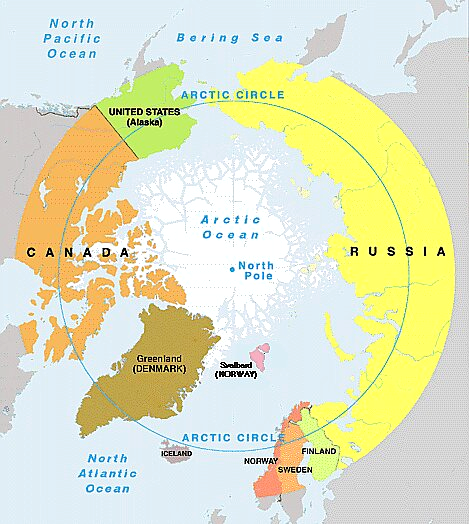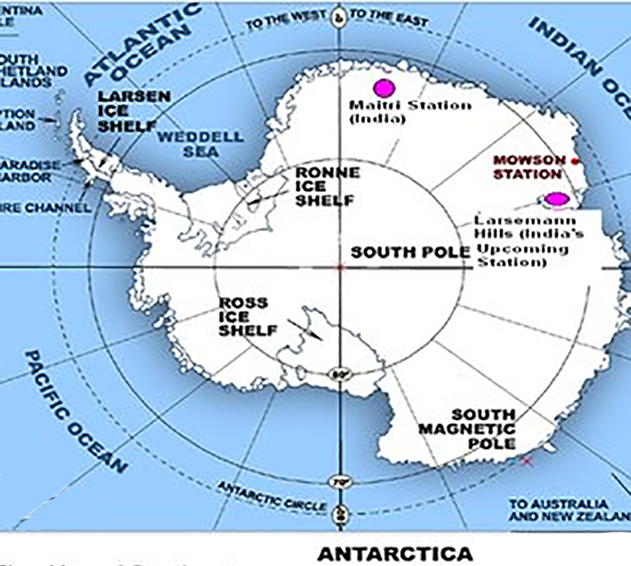Science & Technology
PACER Scheme
- 29 Mar 2022
- 6 min read
For Prelims: India’s Antarctic and Arctic Missions, PACER Scheme, National Centre for Polar and Ocean Research (NCPOR), IndARC, Ocean Services, Technology, Observations, Resources Modelling and Science (O-SMART) ACROSS Scheme
For Mains: Achievements of Indians in Science & Technology, Polar research
Why in News?
Recently, the Polar Science and Cryosphere (PACER) scheme has been approved for continuation by the Union Cabinet from 2021 to 2026.
What is PACER Scheme?
- PACER encompasses the following six components.
- Construction of polar research vessel
- Construction of the third research base in Antarctica
- Indian scientific endeavours in the Arctic
- Polar expeditions-Antarctica
- Southern Ocean Expedition
- It is implemented through the National Centre for Polar and Ocean Research (NCPOR).
What are the Major Works under this Scheme?
- Understanding of Biogeochemical Processes: Field-based studies were conducted in the lakes of Larsemann Hills, East Antarctica for the understanding of biogeochemical processes in supraglacial environments.
- IndARC System: The IndARC mooring system along with the Hydrophone system was successfully retrieved and deployed in Kongsfjorden, Svalbard.
- Research Studies in Himalayas: Glaciological field campaigns were carried out in six benchmark glaciers in Chandra basin of Lahaul-Spiti region of Western Himalaya.
- Winter snow accumulation over the glaciers was recorded using snow pits and snow corners.
- Automatic Weather Station (AWS) Systems: Two new Automatic Weather Station (AWS) systems were installed at Baralacha La, a high elevation site in the arid Spiti region to strengthen infrastructure across the Chandra basin.
- Southern Ocean Expedition :The 11th Indian Southern Ocean Expedition was executed successfully
What is the National Centre for Polar and Ocean Research (NCPOR)?
- It is an autonomous institute under the Ministry of Earth Sciences.
- Its responsibilities include:
- Management and upkeep of the Indian Antarctic Research Bases “Maitri” and “Bharati”, and the Indian Arctic base “Himadri”.
- Management of the Ministry’s research vessel Ocean Research Vehicle (ORV) Sagar Kanya as well as the other research vessels chartered by the Ministry.
- The ORV Sagar Kanya is a versatile ocean observing platform equipped with technologically advanced scientific equipment and related facilities.
- Playing a facilitatory role in the scientific research activities being undertaken by several national institutions and organisations in Antarctica, the Arctic and in the Indian Ocean sector of the Southern Ocean.
- Playing a lead role in the geoscientific surveys of the country’s Exclusive Economic Zone (EEZ) and its extended continental shelf beyond 200m, deep-sea drilling in the Arabian Sea basin through the International Ocean Discovery Program (IODP), exploration for ocean non-living resources such as gas hydrates and multi-metal sulphides in mid-ocean ridges.
- It is located in the state of Goa.
What are Other Major Initiatives of the Ministry of Earth Sciences?
- IndARC
- Ocean Services, Technology, Observations, Resources Modelling and Science (O-SMART)
- ACROSS Scheme
What are India’s Arctic Missions?
- India launched its first scientific expedition to the Arctic Ocean in 2007.
- India opened a research base named “Himadri” in Svalbard, Norway in July 2008 to carry out studies in disciplines like Glaciology, Atmospheric sciences & Biological sciences.

What are India’s Antarctic Missions?
- India officially acceded to the Antarctic Treaty System on 1st August 1983.
- On 12th September 1983, India became the fifteenth Consultative Member of the Antarctic Treaty.
- India is expanding its infrastructure development in Antarctica.
- The newest base commissioned in 2015 is Bharati.
- India is rebuilding its station, Maitri, to make it bigger and last for at least 30 more years.
- Dakshin Gangotri, the first Indian base established in 1984, has weakened and become just a supply base.
- Sagar Nidhi: In 2008, India commissioned the Sagar Nidhi, for research.
- It is an ice-class vessel, it can cut through the thin ice of 40 cm depth and is the first Indian vessel to navigate Antarctic waters.
UPSC Civil Services Examination, Previous Year Questions (PYQs)
Q. Consider the following countries: (2014)
- Denmark
- Japan
- Russian Federation
- United Kingdom
- United States of America
Which of the above are the members of the ‘Arctic Council’?
(a) 1, 2 and 3
(b) 2, 3 and 4
(c) 1, 4 and 5
(d) 1, 3 and 5
Ans: (d)
Exp:
- The Arctic Council includes Canada, the Kingdom of Denmark, Finland, Iceland, Norway, the Russian Federation, Sweden and the United States as its members.





